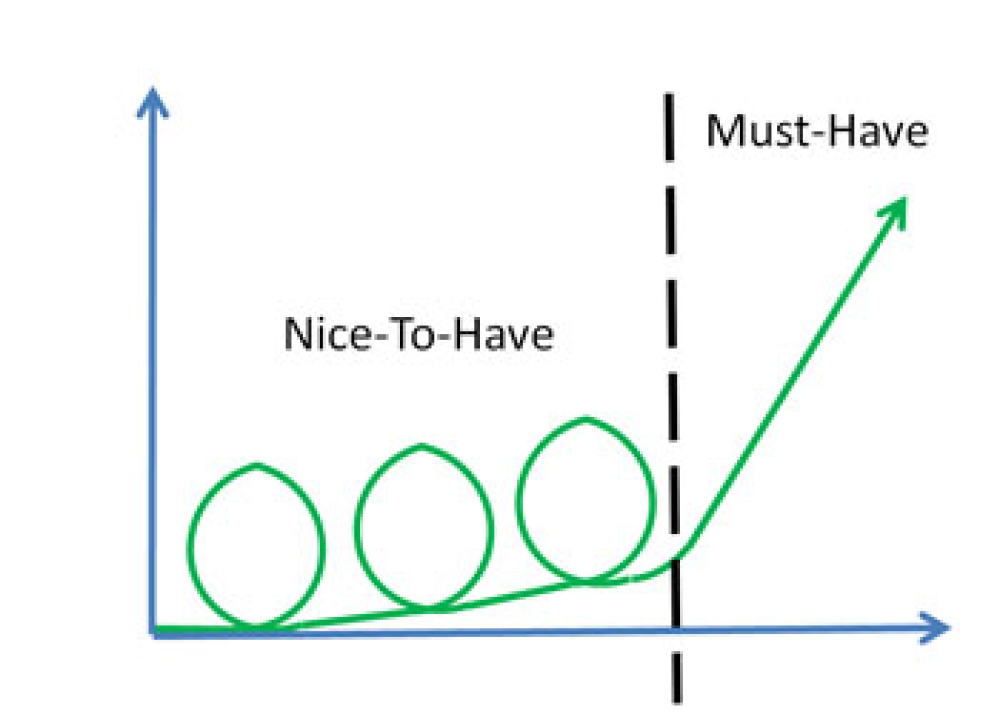'Must Have' Propositions - What are the essential attributes of a successful telemarketing proposition?
20 Sep 2016

By contrast, there will always be those calls, where despite the caller’s best efforts, you are simply unable to see how this oft described ‘new and unique’ product or service simply fails to translate into a viable solution for you.
The simple fact is, not all propositions, no matter how pioneering, lend themselves naturally to a telemarketing approach. And, not all are well placed to provide an immediate return on investment, from what can be a relatively expensive marketing channel.
The good news, however, is that a lot can be done in the preparation phase to ensure that yours is not one of those, which promises a great deal, but which all too frequently gets short shrift from your buyer.
Time Poor
Depending on who you are targeting with your proposition, yours is undoubtedly one of many offers your prospect will receive at any given time. Decision makers in SME organisations are likely to receive upwards of 10 sales calls a month, with switchboards in Enterprise companies, gatekeeping twice or three times as many. Some job functions such as HR or Finance, whose remit can be broad, are among the most heavily targeted with well-meaning, but all too often poorly articulated, propositions.
To get that highly sought positive response, it is essential that your offer is not perceived as ‘nice to have’. The decision maker must immediately appreciate the value it can provide and how it can contribute to success or failure in their business.
So what are the key features of a MUST HAVE proposition?
It gives you an immediate and obvious return
It may have an immediate element of threat, if you don’t engage
It’s immediately apparent that it is unique – it offers benefits that no other product can provide.
Immediate Return – this generally means it will make money or save money for you. The ’must have’ proposition will be able to convey this message with a tangible sum ideally, or with direct examples of the savings other companies have made, ideally firms of the same size, type, and in the same sector. If you can’t do this, perhaps because your product is new to the market or entering a new sector, then you might need to reinforce its value with a free trial or money back offer.
Where a proposition combines low (or zero) cost with high value, this makes it a real ‘Must Have’ and highly tele-marketable - for example, we were engaged by a company offering specialist knowledge and guidance to qualifying businesses on how to claim tax relief from the government in their specific industry.
Immediate Threat – the fear factor is a well-established sales and marketing tactic that gets attention and motivates a customer to take action. At its most obvious this might be legal or compliance, where companies are unwittingly in breach of legislation or certain codes of practice.
A proposition, which relates to compliance, also lends itself well to a telemarketing approach. For instance, we recently helped position a proposition that enables companies and individuals to avoid personal and corporate liability for bribery under the UK Bribery Act (2011). This offer ensured the company had strong, up-to-date and effective anti-bribery policies and systems in place and it resonated immediately with senior management responsible for this issue.
More subtle elements of threat include opportunity cost, or you might say fear of losing out, such as loss of efficiency (you are wasting money or resource), or loss of sales opportunity. These slightly less tangible messages are best reinforced by real, concrete examples such as: Company X, also in packaging, saved 7.5% of its procurement costs in 1 year...” or Company Y generated 12 new business opportunities, and converted 4 directly from leads from the advertising site, making £25,000 from an investment of £500.00”
It’s ‘Immediately’ Unique - firstly, is your proposition really unique? What does it do that other products can’t, and most importantly, how does that uniqueness address a real pain point for that business?
It may be that the customer has a solution already but, if your solution solves a problem for the business in a way that is cheaper/faster/more painless than their current way of working, that will also give them a compelling reason to engage. For example, if you have an easily implemented, low-cost but highly effective tool that means the customer can dispense with a piece of expensive licensed software, this bodes well for a telemarketing approach.
The key word in each of these cases is ‘Immediate’.Telemarketing is the ultimate ‘Immediate’ channel. It delivers the message straight to someone’s ear- in person, not via an impersonal route such as advertising, email or social media. It communicates direct with a human voice – intrusively, demanding the attention of the listener, at least at the start of the call, and it requires a message that matches that immediacy, so that the hard won contact and valuable opportunity is not wasted.
From Nice to Must
Many clients we speak to describe their proposition as unique, but then brief us on a set of fairly generic benefits, often claimed by many other firms. For example, “we offer unparalleled customer service”, or “we excel at SEO design”. By contrast, others have a quite poorly formulated proposition but some very distinct benefits come to the fore during briefing, which they just haven’t highlighted, or sometimes even considered.
Taking time to formulate your proposition and ensure you are communicating the ‘Must Have’ message is critical. Our recent blog “How Effective is your Telemarketing Message?” talks about this in more detail but here are three ways to assess if yours is, or can be converted to, a ‘must have’ proposition.
Put yourself in the position of the decision maker and consider the 3 ‘MUST HAVE’ attributes:
Immediate Return – if you are talking to a decision maker who has a budget and a target, you will want a definite part of that budget. But, can you promise him a definite return? Have that conversation with yourself as honestly as you can, and then build a case that shows this as convincingly as possible.
Immediate Threat - can you show this decision maker an immediate and definite consequence of him not taking up your offer? If it is not immediate, can you put some real and tangible financial consequences around that over a period of time?
Unique Product - firstly assess honestly whether your product is truly unique, or more importantly, offers a unique solution. If it is truly unique, then what are businesses doing to solve that problem at the moment? Is the problem important enough for them to make the effort? If so, is what you have compelling enough to make them change?
So what can I do with a nice to have product?
People still buy these products but they tend to buy them after more consideration, more information and when the time is right. Whilst, as we have said, telemarketing is the ultimate ‘immediate’ channel, it can still help you nurture the interests of longer term prospects who may not be immediately ready to buy, and help you target high value individuals that you are unable to reach through other channels. It can also help support your broader sales and marketing activity with high quality data and insight to inform your overall strategy.
With over 70 campaigns a year for the last 25 years we have experience in all these areas. We can advise you both on the strength of your proposition as a MUST HAVE, help you with ways to convert what might be perceived as a ‘Nice to Have’, or show you some of the many other ways that voice contact can add value to your sales and marketing effort.


1.png)


Please login to comment.
Comments